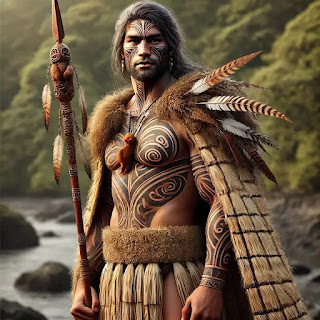Disclaimer #2: We apologize for any and all mistakes, we've done the best we can. We always find a small bit of history helpful on our trips, but of course there is much more than the basics we have outlined here.
The first people to populate New Zealand were the Māori people. Their own traditions state that they arrived in the 1300's, but archeological evidence places them here in the 1200's or even earlier. The Māori claim to have sailed from a homeland called Hawaiki, which sounds like maybe they came from Hawaii? But no, researchers place their origin as Tahiti and other Polynesian islands.
The
first European to see New Zealand was the Dutch sailor Abel Tasman in
1642. He tried to land but was driven away by Māori warriors.
His mistake? The Māori were blowing some sort of
horn or trumpet, so the Dutch mirrored the behaviour and blew one
back, not knowing that they had inadvertently declared war.
Oops.
The next European to visit New Zealand was Captain James Cook in 1769. He navigated around both islands and mapped them. He was able to establish friendly relations with the Māori. His journals inspired other Europeans to go to New Zealand. The first were whalers in the late 1700s. Of course, the missionaries were not long to follow in the early 1800s, and most of the Māori were converted to Christianity.
In 1840, the Māori signed the Treaty of Waitangi with the British, who promised them protection of their land rights if they accepted British rule. However, more and more Europeans demanded that the Māori sell their land, and war ensued in the mid 1800s. The Māori were defeated.
Trade began between Britain and the farming communities in New Zealand. New Zealand has remained an agricultural society since. As national identity grew, New Zealand withdrew from Britain in stages, becoming a Dominion in 1907 and a fully self-governing country in 1947, but remains part of the Commonwealth.
In recent history, the Māori have been demanding reparation for stolen lands and have been working to preserve their language and culture. At their peak before European settlement, they numbered about 200,000. Disease and warfare reduced them to 42,000 by the late 1800s. Today they number about 904,000.




No comments:
Post a Comment